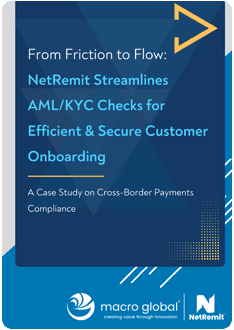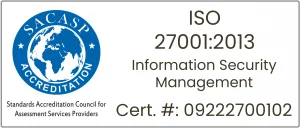CASE STUDY
From Friction to Flow: NetRemit Streamlines AML/KYC Checks for Efficient & Secure Customer Onboarding

Client Background
A renowned Money Transfer Operator in the UK who is specialised in cross-border payments to Pakistan faced several challenges with their existing AML/KYC systems, disrupting smooth customer onboarding. Hence, they partnered with Macro Global, seeking an efficient solution to overcome those hurdles.
Challenges Faced
- eKYC/Person Match: High false positives/negatives, slow processing, integration issues, limited AI capabilities, and lack of compliance with security standards.
- Adverse Media Screening: High false positives, insufficient verification attributes, lack of ongoing screening, and limited integration options.
- Watchlist/AML Verification: Excessive false positives, limited filtering, configuration deficiencies, data management issues, regulatory gaps, and integration limitations.
- Identity Document Verification: Poor user experience, technical challenges, insufficient document verification, vendor inflexibility, and performance inconsistencies.
Solutions Implemented
NetRemit, a comprehensive remittance software with a customisable and robust onboarding journey, adapts to global regulatory compliance needs is set up within the MTO. Multi-layered strategy with new user registration is followed by:
- Selfie Liveliness Detection: Enhanced security through AI-driven selfie verification.
- eKYC: Encompasses Customer Due Diligence, enhanced CDD, risk assessment, document verification, and customer segmentation.
- Unified TPP Services (UTS) for AML/KYC: Advanced verification capabilities including document capture, OCR, barcode/NFC verification, data validation, hologram checks, and real-time AML compliance checks.
Results Obtained
- Comprehensive screening, strengthened adverse media checks, reduced false positives, and a clear compliance framework.
- Streamlined onboarding, automated data validation, and reduced manual intervention.
- Multi-layered security controls, improved counterfeit detection, strengthened risk assessments, and continuous monitoring.
- Enhanced user experience with minimised delays.
- Seamless integration with existing systems and resolved SDK issues.
- Reduced operational costs and minimised wasted resources

















